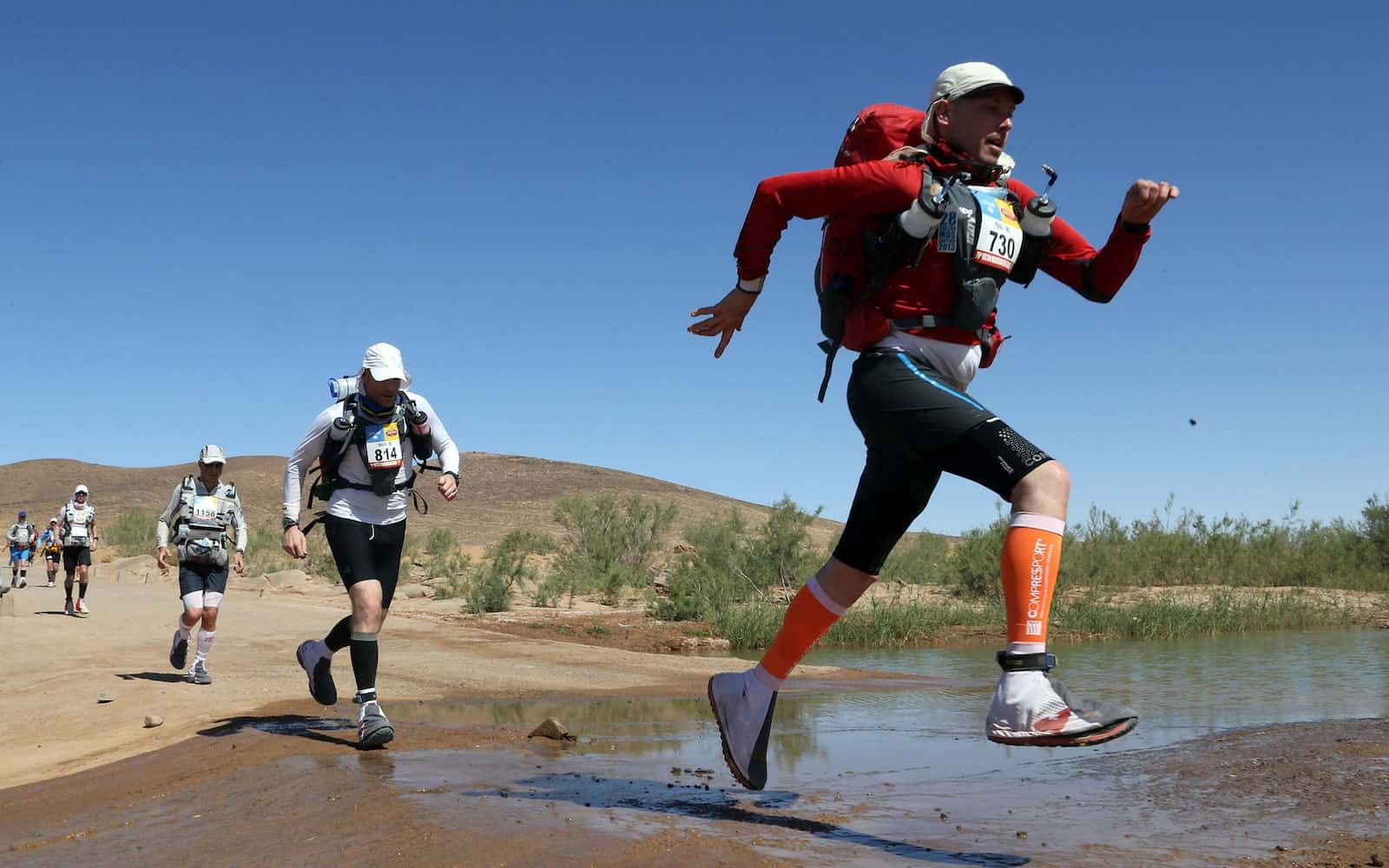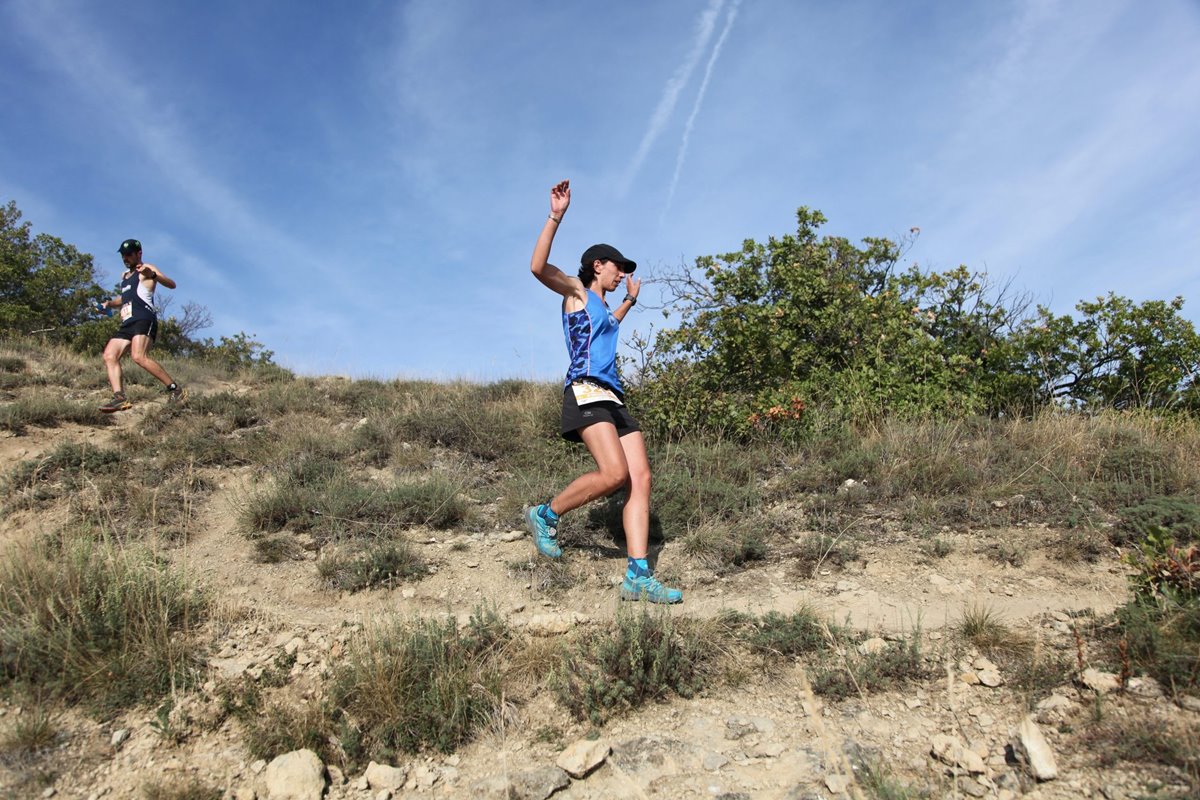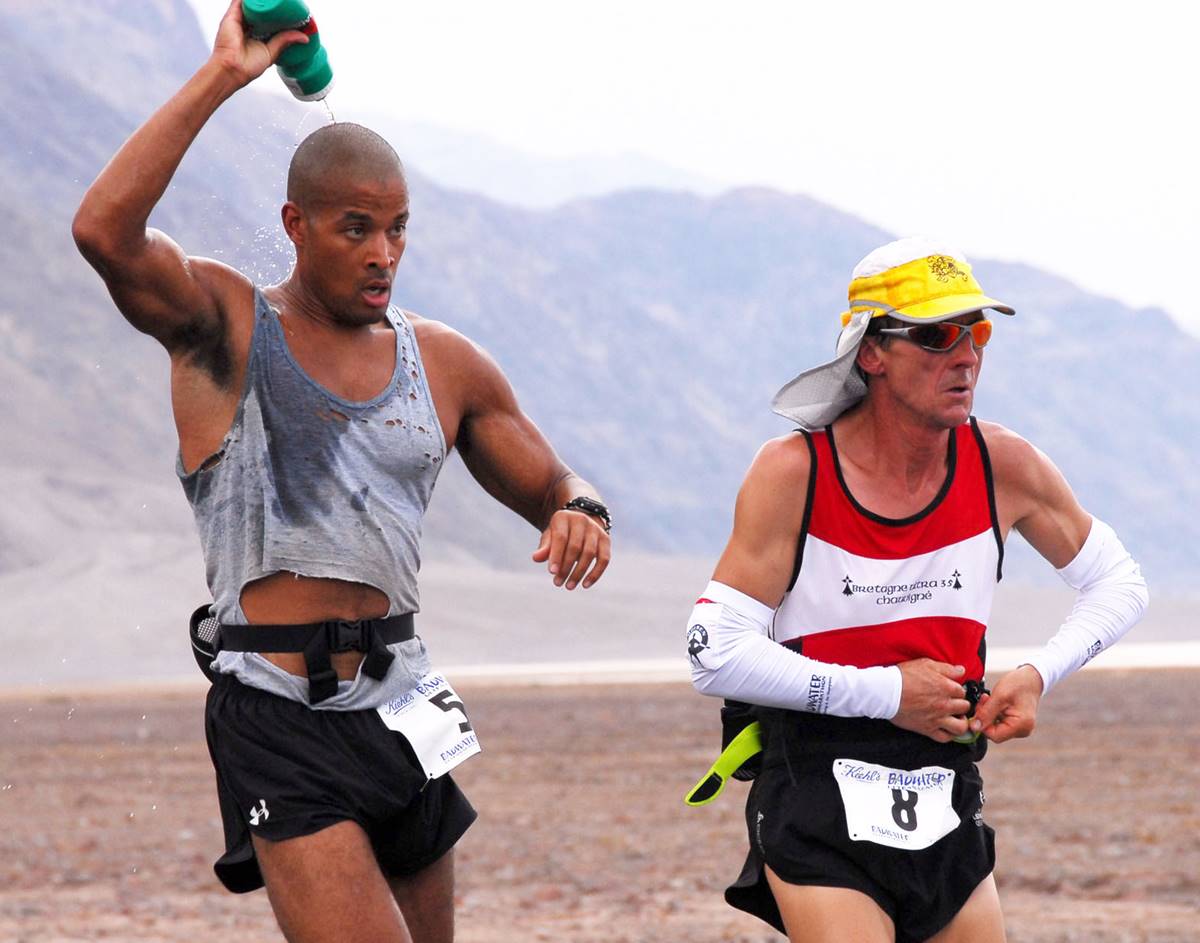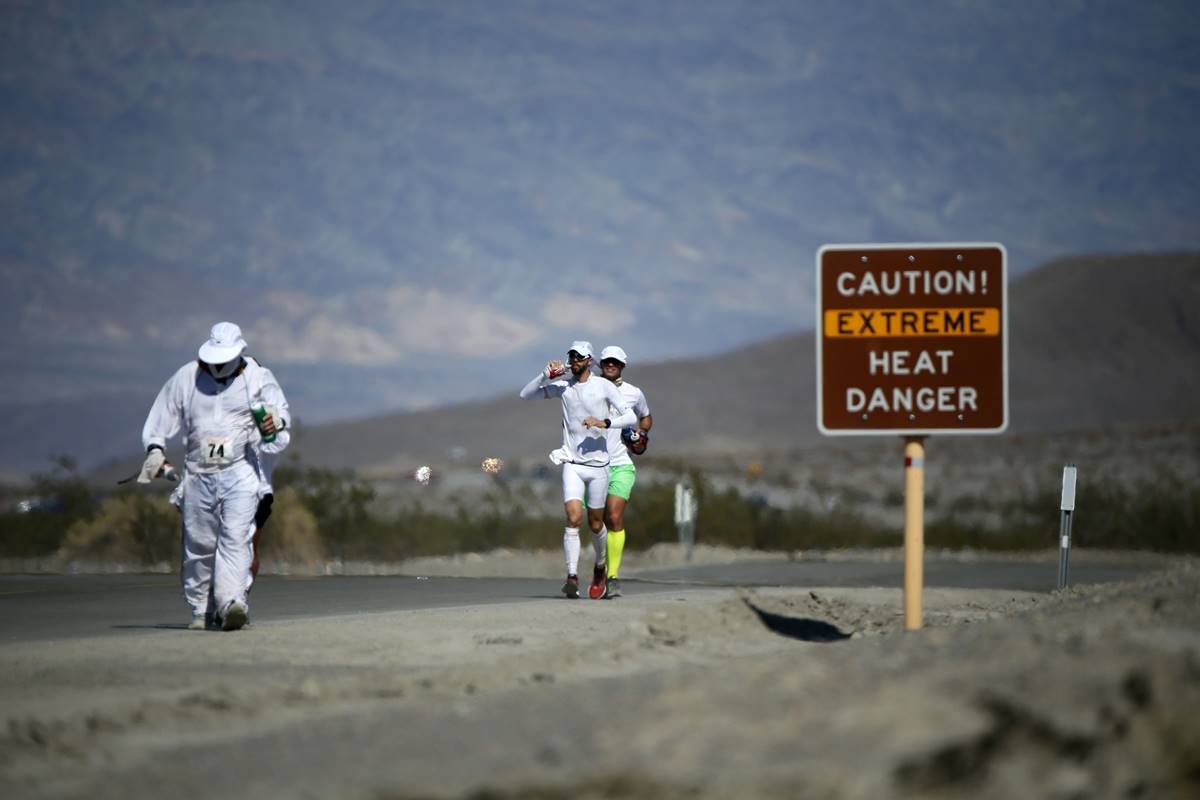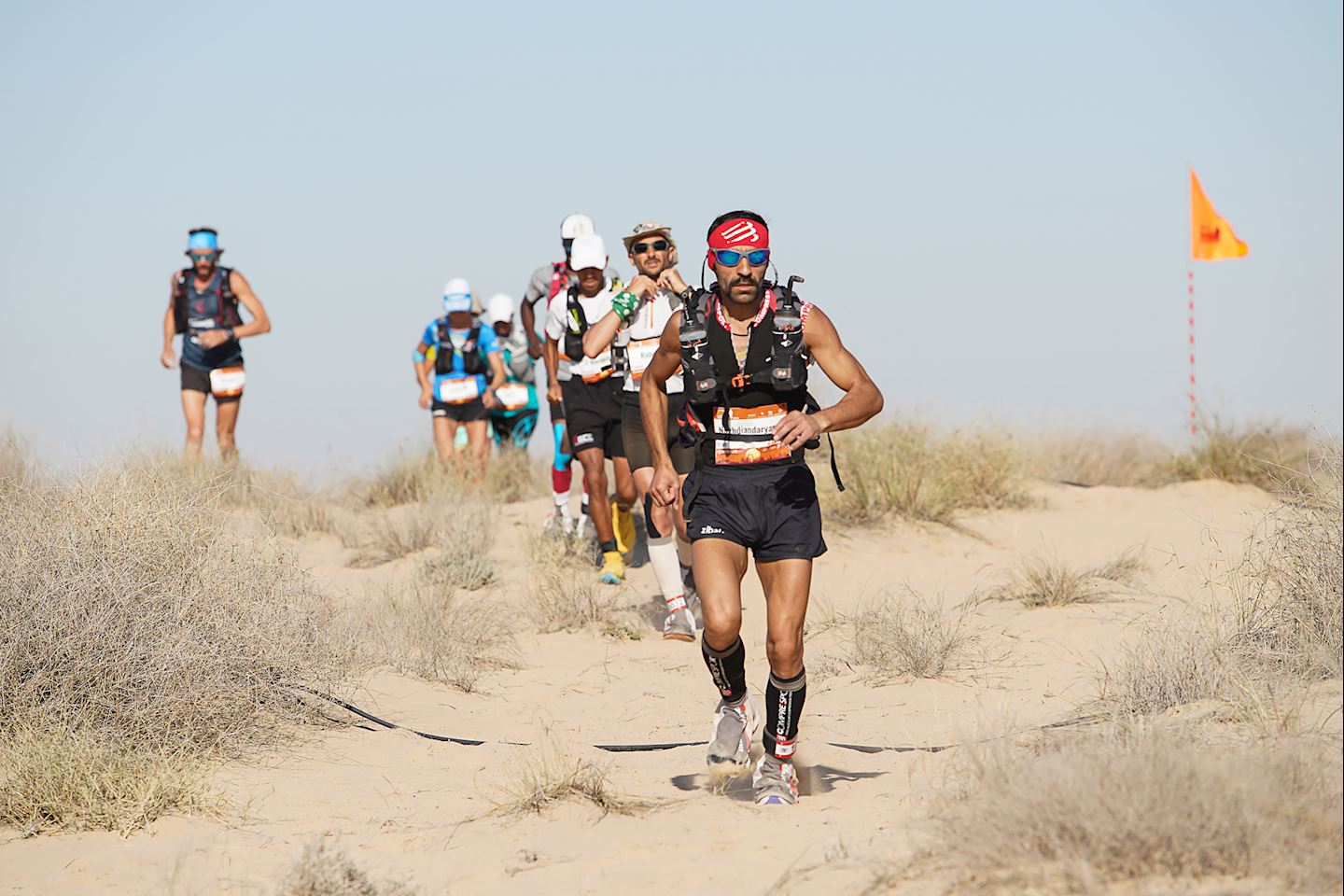

Featured
How Long Is An Ultramarathon
Modified: October 3, 2023
Discover how long an ultramarathon is and what it takes to complete one. Get featured tips and insights to help you prepare for this challenging distance.
Introduction
Ultramarathons, also known as ultra-distance races, have gained popularity in recent years as athletes seek new challenges and push their physical limits. These races extend far beyond the traditional marathon distance of 26.2 miles and require participants to cover incredible distances that can range from 50 kilometers to over 100 miles. With their grueling nature and the immense endurance required, ultramarathons are not for the faint of heart.
What makes ultramarathons so captivating is the sheer test of physical and mental strength they demand. Participants must navigate tough terrains, conquer steep inclines, endure extreme weather conditions, and push through fatigue that can last for hours or even days. These races offer a unique opportunity for athletes to push their boundaries and discover what they are truly capable of.
In this article, we will delve into the world of ultramarathons, exploring their historical background, the training required to participate, and the factors that influence the duration of these races. Whether you’re an experienced ultramarathoner or simply curious about this extreme sport, read on to gain insights into the fascinating world of ultramarathons.
Definition of Ultramarathon
An ultramarathon is a footrace that exceeds the traditional marathon distance of 26.2 miles (42.195 kilometers). Typically, ultramarathons cover distances ranging from 50 kilometers to over 100 miles (160.934 kilometers to 160.934+ kilometers). These races can take place on a variety of terrains, including trails, roads, mountains, deserts, and even snow-covered landscapes. Ultramarathons can be organized as single-stage events, where participants complete the entire distance non-stop, or as multi-stage events, where the race is divided into multiple days or stages.
One of the standout characteristics of ultramarathons is their diverse nature. Different races offer unique challenges, such as extreme elevation gain, harsh weather conditions, or difficult terrains. This variety attracts runners seeking new experiences and encourages the development of specific skills necessary to tackle each race’s distinctive demands.
Ultramarathons can be classified into various categories based on distance. Some commonly known categories include 50-kilometer races, 50-mile races, 100-kilometer races, 100-mile races, and races that extend beyond 100 miles. Each distance presents its own set of challenges and requires athletes to adapt their training, nutrition, and pacing strategies accordingly.
Ultramarathons also come in different formats, such as point-to-point races, loop courses, or out-and-back routes. Point-to-point races require participants to start at one location and finish at another, often showcasing the scenic landscape along the way. Loop courses involve running multiple laps of a specific route, while out-and-back routes require runners to cover a distance before turning back to the starting point.
Another popular variation of ultramarathons is the timed event, where participants have a set amount of time, typically 12, 24, or 48 hours, to cover as much distance as possible. The competitor who covers the greatest distance within the allotted time is declared the winner. Timed events provide a unique challenge as runners must balance speed with endurance, determining the most effective strategy for maximizing their distance.
Historical Background
The origins of ultramarathons can be traced back to ancient civilizations, where long-distance running played a significant role in various cultures. In ancient Greece, for example, the messenger Pheidippides famously ran from the city of Marathon to Athens, covering a distance of approximately 26 miles (42 kilometers), to deliver news of the Greek victory in the Battle of Marathon. This event is believed to be the inspiration behind the modern-day marathon race.
Ultramarathons, however, became more prevalent in the 20th century with the rise of endurance sports and the desire to push the boundaries of human achievement. The Comrades Marathon, established in South Africa in 1921, is one of the oldest and most famous ultramarathons. The race covers a distance of approximately 56 miles (90 kilometers) and attracts thousands of participants each year.
Throughout the 20th century, ultramarathons gained traction worldwide, with the establishment of renowned races like the Western States Endurance Run in the United States (1974) and the Marathon des Sables in Morocco (1986). These events captured the imagination of athletes and showcased the incredible feats of endurance that humans are capable of.
In recent decades, ultramarathon participation has surged in popularity, with more races being organized and greater global participation. The growth of trail running and the accessibility of ultramarathons on both amateur and professional levels have contributed to this increase. The sport continues to evolve, with new races and challenges constantly emerging, attracting a mix of elite athletes, passionate runners, and adventure seekers.
The popularity of ultramarathons can also be attributed to the unique community and camaraderie that develops among participants. Unlike traditional races, ultramarathons foster an environment of support and cooperation, where participants often form bonds and encourage each other along the arduous journey. This sense of community is further strengthened by the participation of volunteers and spectators who provide crucial support and aid stations throughout the race.
As ultramarathons continue to captivate the world, they serve as a testament to the indomitable spirit of human endurance and the pursuit of extraordinary challenges. What was once considered an extreme and niche activity has now become a global phenomenon, attracting athletes from all walks of life who are driven by a passion for pushing their limits and exploring the outer edges of their physical and mental capabilities.
Training for Ultramarathons
Preparing for an ultramarathon requires a strategic and well-rounded training program that goes beyond typical marathon training. Due to the extended duration and unique challenges of ultramarathons, athletes must focus on building endurance, strength, and mental resilience. Here are key aspects to consider when training for an ultramarathon:
- Gradual mileage increase: Ultramarathon training involves gradually increasing weekly mileage to build endurance over time. This allows the body to adapt to the increased distances and reduces the risk of overuse injuries. Runners often follow a periodized training plan, progressively increasing both overall mileage and long run distance.
- Specificity of training: Ultramarathon training should emulate the race conditions as closely as possible. This means incorporating long runs on similar terrain and elevations to the race, practicing running at night if required, and simulating the anticipated weather conditions. Training on hills and trails is crucial to prepare the body for the challenges posed by uneven terrain.
- Strength and cross-training: Building overall strength is an essential aspect of ultramarathon training. Incorporating strength training exercises, such as squats, lunges, core work, and upper body exercises, helps improve muscular endurance and stability. Cross-training activities like cycling, swimming, or hiking can also complement running and provide a break from high-impact training.
- Nutrition and hydration: Proper nutrition and hydration are crucial during both training and the race itself. Learning to fuel your body during long runs and understanding the timing and quantity of nutrition intake can prevent bonking and keep energy levels sustained. Practice consuming various forms of energy gels, bars, and fluids to find what works best for your body.
- Mental preparation: Ultramarathons challenge not only the physical but also the mental fortitude of athletes. Developing mental resilience and positive self-talk is essential for staying motivated and pushing through the toughest moments during the race. Strategies such as visualization, mindfulness, and mental rehearsal can help athletes maintain focus and overcome difficult situations.
- Rest and recovery: Adequate rest and recovery are vital aspects of any training program. Listening to your body and incorporating rest days, easy runs, and active recovery activities, such as foam rolling and stretching, helps prevent overtraining and reduces the risk of injury. Quality sleep and a balanced approach to training are key factors in successful ultramarathon preparation.
It is important to note that each individual’s training program should be tailored to their specific goals, abilities, and fitness levels. Working with a coach or experienced ultramarathoner can provide valuable guidance and ensure a structured and effective training plan.
Remember, ultramarathon training is not just about physical preparation; it is a holistic approach that encompasses mental strength, nutrition, injury prevention, and overall well-being. By incorporating these elements into your training, you’ll be better equipped to tackle the challenges and fully enjoy the journey of an ultramarathon.
Duration of Ultramarathons
The duration of ultramarathons can vary greatly depending on factors such as the distance of the race, the terrain, the weather conditions, the fitness level of the participants, and the overall race strategy. Unlike traditional marathons that are usually completed within a few hours, ultramarathons can span from several hours to multiple days. Here are some key factors that influence the duration of ultramarathons:
- Distance: The distance of an ultramarathon is one of the primary factors determining its duration. Races can range from 50 kilometers to over 100 miles, with some ultra-endurance events extending beyond 200 miles. As the distance increases, participants need to pace themselves strategically to conserve energy and maintain endurance over the extended duration.
- Terrain and elevation gain: The terrain plays a significant role in the duration of an ultramarathon. Races that take place on hilly or mountainous terrains will naturally take longer to complete compared to races on flatter or road courses. Additionally, the elevation gain during the race can significantly impact the pace and energy expenditure of the participants.
- Weather conditions: Extreme weather conditions, such as excessive heat, cold temperatures, high humidity, or strong winds, can affect the duration of an ultramarathon. Participants may need to adjust their pace and hydration strategies to cope with the environmental challenges, potentially leading to longer race times.
- Runner’s fitness level: The fitness level and experience of the participants can influence the duration of an ultramarathon. Well-trained athletes may be able to maintain a steady pace throughout the race, while less experienced runners might need to incorporate more walking breaks or slow down their overall speed. The individual’s level of endurance and ability to manage fatigue will directly impact the duration of the race.
- Race strategy and pacing: The race strategy employed by participants can have a significant impact on the duration of an ultramarathon. Some runners prefer to start at a conservative pace, gradually increasing their speed throughout the race, while others may prefer a more aggressive approach. The ability to gauge one’s effort and make strategic decisions regarding rest breaks and fueling can influence the overall duration of the race.
Considering the various factors at play, the duration of an ultramarathon can range from a few hours for shorter distances to several days for longer races. It is important for participants to have a clear understanding of their own abilities and set realistic expectations regarding the time required to complete the race. Ultimately, the duration of an ultramarathon is not just a measure of finishing time but a testament to the determination, endurance, and perseverance of the athletes who undertake this incredible feat.
Factors Affecting Ultramarathon Duration
The duration of an ultramarathon is influenced by a multitude of factors that can impact the performance and overall race experience. Understanding these factors is crucial for athletes in developing effective strategies and managing their expectations. Here are some key factors that can significantly affect the duration of an ultramarathon:
- Terrain: The type of terrain traversed during an ultramarathon can greatly impact the duration of the race. Races that take place on flat, smooth surfaces like roads will generally result in faster race times compared to races on rugged trails with steep inclines and descents. The uneven terrain and technical footwork required in off-road races demand more energy and slower pace, ultimately lengthening the race duration.
- Weather conditions: Extreme weather conditions such as high heat, humidity, strong winds, or heavy rain can significantly affect race duration. Participants may need to adjust their pace and hydration strategies to cope with the challenging weather, potentially slowing down their overall speed and resulting in longer race times.
- Elevation gain: Ultramarathons that involve significant elevation gain can have a considerable impact on race duration. Racing uphill requires sustained effort and can slow down the overall pace of the participants. Similarly, navigating downhill sections can be challenging and demands caution, potentially affecting the average speed. The cumulative effect of elevation gain throughout the course can extend the duration of the ultramarathon.
- Aid station strategy: The time spent at aid stations can influence the duration of an ultramarathon. Participants may choose to take longer breaks to refuel, rest, and recover, or opt for quicker pit stops to maintain momentum. The frequency and length of aid station breaks can impact the overall race time, especially in longer distance events where proper nutrition and hydration are crucial.
- Crew and support: Athletes with a dedicated crew or support team can experience faster race times compared to those who are self-supported. A crew can provide invaluable assistance, including pacing, navigation, logistical support, and motivation. Having a reliable support system can alleviate some of the physical and mental burdens, potentially leading to improved performance and shorter race durations.
- Pacing strategy: The pacing strategy employed by participants can greatly impact the duration of an ultramarathon. Beginning the race too fast can lead to early fatigue and potentially result in slower race times in later stages. On the other hand, starting too conservatively may prevent athletes from reaching their full potential. Developing a well-calibrated pacing strategy, taking into account the course difficulty and personal capabilities, can optimize race duration.
- Mental resilience: The mental fortitude of ultramarathon runners plays a crucial role in determining race duration. Ultramarathons are mentally challenging, requiring athletes to stay focused and motivated for extended periods. Maintaining a positive mindset, dealing with unexpected obstacles, and pushing through difficult moments can help athletes minimize race duration by reducing time spent struggling or dwelling on negative thoughts.
It’s important for ultramarathon runners to recognize these factors and create a race plan that considers and adapts to them. Understanding the unique challenges posed by terrain, weather conditions, elevation gain, aid station strategies, support systems, pacing, and mental resilience will ultimately contribute to more successful and efficient race experiences.
Ultra-endurance Training Techniques
Training for ultra-endurance events requires a specialized approach that goes beyond traditional marathon training. Ultramarathons demand prolonged physical exertion and mental stamina, necessitating specific training techniques to build endurance and resilience. Here are some key training techniques to enhance ultra-endurance performance:
- Long-distance runs: Completing long-distance runs is the foundation of ultramarathon training. Gradually increasing the duration and distance of your long runs helps build endurance and prepares your body for the challenges of extended periods of physical exertion. Incorporating back-to-back long runs on consecutive days can also simulate the accumulated fatigue experienced during multi-day ultra-endurance events.
- Hill and trail training: Ultramarathons often take place on hilly or technical terrain. Incorporating hill repeats, trail runs, and elevation gain workouts into your training helps develop the necessary strength, agility, and mental fortitude for these demanding courses. Focus on both uphill and downhill training to develop the necessary skills to navigate varying terrain.
- Progressive overload: Gradually increasing the intensity, duration, and frequency of your training sessions is essential for building endurance. Employ a progressive overload principle, slowly challenging your body to adapt to increased training stress. This allows for incremental improvements in performance and reduces the risk of overuse injuries.
- Strength and cross-training: Including strength training exercises in your training program helps improve muscular endurance and overall stability. Focus on lower body exercises such as squats and lunges to strengthen leg muscles, as well as upper body exercises to maintain balance and stability. Cross-training activities like cycling, swimming, or hiking can also complement running, offering low-impact alternatives and promoting overall fitness.
- Mental resilience exercises: Developing mental fortitude is crucial for ultra-endurance events. Practice mental resilience exercises such as visualization, positive self-talk, and mindfulness during training runs. This will help you stay focused, overcome challenges, and maintain motivation during the race. Mental resilience techniques are especially important during moments of fatigue or when facing unexpected difficulties.
- Tapering: Tapering, or reducing training volume and intensity in the weeks leading up to the race, is essential to optimize performance and prevent burnout. Tapering allows your body to recover and replenish energy stores, ensuring you arrive at the starting line fresh and ready for the race. It is important to find the right balance between maintaining fitness and allowing for adequate rest.
- Nutrition and hydration practice: Training for ultra-endurance events should include practicing your race-day nutrition and hydration strategies. Experiment with different energy gels, bars, hydration systems, and electrolyte options to find what works best for you. Understanding your body’s needs and practicing fueling during long training runs will help avoid digestive issues and ensure you have an effective nutrition plan for race day.
Remember, consistency, patience, and adaptability are key throughout the training process. Listen to your body, make adjustments as needed, and allow for adequate recovery to prevent injuries and optimize performance. By incorporating these ultra-endurance training techniques into your routine, you will be better prepared to tackle the physical and mental demands of ultramarathons.
Conclusion
Ultramarathons are a unique and demanding form of endurance running that pushes athletes to their limits both physically and mentally. These races, exceeding the traditional marathon distance, present a variety of challenges that require careful preparation and training. From understanding the definition and historical background of ultramarathons to the factors influencing race duration, training techniques, and the importance of mental resilience, we have explored the key aspects of this remarkable sport.
Ultramarathons offer participants the opportunity for personal growth and self-discovery as they conquer extreme distances, diverse terrains, and adverse weather conditions. The training required for ultramarathons goes beyond simply building mileage; it involves developing endurance, strength, and mental fortitude. Incorporating strategies such as progressive overload, specific terrain training, strength workouts, and mental resilience exercises optimizes performance and prepares athletes for the unique demands of ultramarathons.
While race duration may vary depending on factors such as distance, terrain, weather, pacing, and individual fitness levels, what remains constant is the incredible journey ultramarathon runners embark upon. The challenges faced, the camaraderie with fellow runners, and the indomitable spirit of endurance create an experience that transcends the finish line.
Whether you are a seasoned ultramarathoner or someone intrigued by the allure of pushing your limits, understanding the intricacies of ultramarathons is paramount. By embracing a holistic approach to training, nurturing both physical and mental resilience, and respecting the unique demands of the sport, you can embark on your own ultramarathon journey with confidence and determination.

